Larry Wood
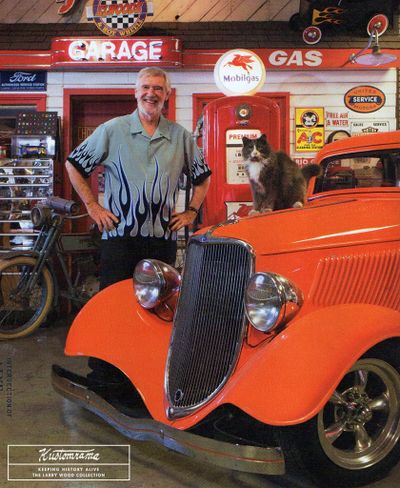
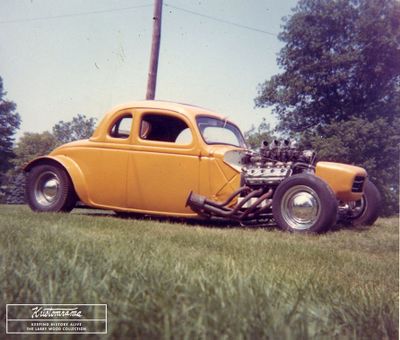

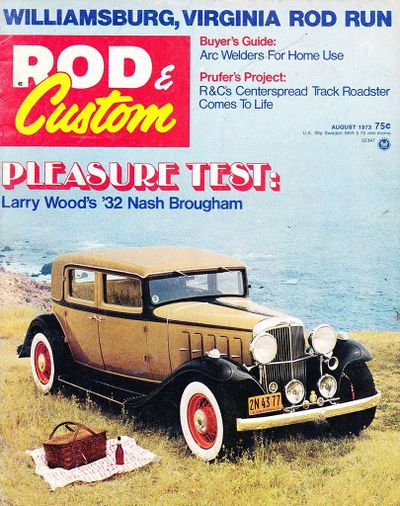
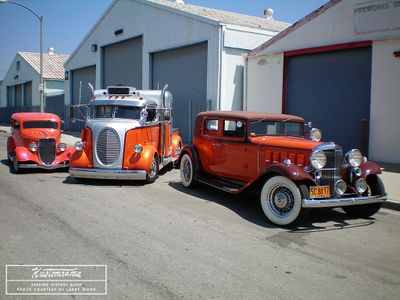
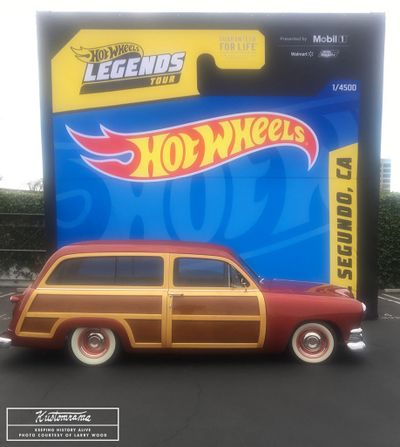
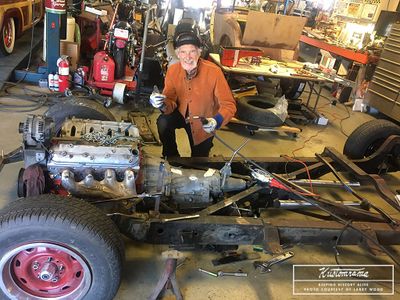
Larry Wood, affectionately known as "Mr. Hot Wheels," has had a profound impact on the toy car industry and car culture. His journey from a childhood devoid of car toys to becoming a legendary Hot Wheels designer is a tale of passion, creativity, and resilience. Larry built his first hot rod when he was 18, and in 2024, he had owned a hot rod every day for 64 years.[1]
Contents
- 1 Early Life and Childhood Fascinations
- 2 Teenage Years and the Turning Point
- 3 Building His First Hot Rod
- 4 Education and Professional Beginnings
- 5 Shifting Gears: From Hot Rod Enthusiast to Aspiring Car Designer
- 6 Acceptet at the Art Center College of Design
- 7 Molding a Visionary: Larry's Transformative Journey at Art Center
- 8 Landing the Dream Job at Ford Motor Company
- 9 The Reality of Automotive Design in Detroit
- 10 A Turn Towards California
- 11 A New Venture in Aircraft Design
- 12 From Aircraft to Hot Wheels: A New Design Frontier
- 13 The Birth of Hot Wheels
- 14 The Hot Wheels Legacy Begins
- 15 Overcoming Challenges and Innovations
- 16 The Lone Creator in an Empty Playground
- 17 The Rise of Hot Wheels
- 18 From Child's Play to Collector's Pride
- 19 A Designer's Freedom and Legacy
- 20 Celebrating Decades of Innovation
- 21 Inducted Into Automotive Hall of Fame
- 22 Larry Wood's Cars
- 23 References
Early Life and Childhood Fascinations
Born in a small town in Connecticut, Larry grew up far from the automotive world, immersed in cowboy culture. He vividly remembers playing cowboys and Indians, an experience that dominated his early childhood. "I had a cowboy hat, the guns, and everything. My dad got me a fake pony to ride around, you know, stick with a head on it," Larry told Brad King in an interview he did for the Stories N' Steel YouTube Channel.[1]
Teenage Years and the Turning Point
As a teenager, Larry's interest shifted dramatically towards cars. The catalyst for this change was a Hot Rod Magazine his father brought home. "He was a coach, and one of his guys was reading a magazine during football or something. He brought home this Hot Rod Magazine and put it on the kitchen table, just threw it down there. I picked that up, and it was like the switch went off. It was like holy mackerel, look at what they're doing in California with these hot rods and customs. That got me going," he vivdly told King. This newfound fascination led Larry to start working on cars himself, experimenting in a shed behind his house.[1]
Building His First Hot Rod
In the transformative years of his youth, Larry found his calling in the rumbling engines and sleek designs of hot rods, a passion ignited by the pages of Hot Rod Magazine. His journey into the world of automotive crafting began modestly with the purchase of a finned Ford Flathead head in 1958. "That was the greatest thing I ever saw, you know. I probably paid five dollars for it, but it was aluminum, it had fins on it, and it said Edelbrock or something like that. This was really cool." With a newfound passion, Larry's collection of parts grew. He meticulously studied Hot Rod Magazine, absorbing knowledge on assembling lifters and engine components. His workshop was a humble shed behind his house, a cramped space with a dirt floor where winter's chill seeped through the cracks. There, with his engine laid out on the ground, Larry embarked on a hands-on education in automotive mechanics, an endeavor marked by trial and error, devoid of sophisticated tools or knowledge about torque.[1]
In time, his efforts culminated in a semi-complete engine. Yet, it lay there in the shed, a static symbol of potential. Driven by an urge to breathe life into his creation, Larry ventured to a junkyard, where he unearthed a crucial piece of his puzzle: a 1936 Ford chassis that was equipped with a transmission. "We put the Flathead engine in it," Larry told King, "I remember the first time we ever drove it. My buddy Charlie was standing next to me, and I was sitting on a box piece. I was sitting on the box on this chassis, and Charlie had a string going to the carburetors. I had the clutch and everything and said, okay, give it some gas, give it some gas. So I let out the clutch, and of course, Charlie fell back and pulled full throttle! Man, that thing took off! That Flathead ran, man. We went across the street sideways, all the way up there, up my neighbor's yard and everything before the battery luckily fell out and shorted out and stopped the car." This initial escapade, though chaotic, was a defining moment for Larry. It was more than just a wild ride; it was the realization of a dream, the first step in a journey that would carve his path in the world of hot rods. His venture into the neighbor's yard, leaving a trail of upturned grass in his wake, was not just a youthful misadventure but a symbol of his relentless pursuit of his passion, a trait that would come to define his career and legacy.[1]
Over the next four years, the Flathead-powered chassis was turned into a yellow Hemi-powered 1936 Ford 5-Window Coupe. "I did all the work myself with just Hot Rod Magazine for reference," he told Sondre Kvipt of Kustomrama in February of 2024. Larry recalled there weren't many hot rods in Connecticut back then. His was street-driven, and he even took it to Connecticut Dragway occasionally.[2]
Education and Professional Beginnings
After high school, Larry worked at Pratt & Whitney Aircraft, handling aircraft sheet metal. This experience, though not directly related to his passion, was foundational. "It was the first time anybody ever judged me on what I did with my hands," he explained to King. He left Pratt & Whitney Aircraft after a couple of years and moved to Hartford, where he joined the Carbs of Hartford hot rod club.[1] "They had a building, and each car had a stall to work on."[2]
Shifting Gears: From Hot Rod Enthusiast to Aspiring Car Designer
Despite the thrill of racing and the club camaraderie, Larry found himself in a state of introspection during his day job. He worked the midnight shift, a schedule that suited his youthful lifestyle, allowing him to party until work commenced. Yet, beneath this seemingly ideal arrangement, a sense of unfulfillment gnawed at him. One day, Larry experienced a moment of stark realization. He observed a colleague, a man in his forties, performing the same mundane tasks as himself. This sight triggered a profound reflection within Larry: He did not want his future to mirror this scene. The repetitive, unchallenging nature of his job left him yearning for more – for a career that fueled his passion and creativity.[1]
Larry's artistic side had always been present. He had spent considerable time in high school drawing cars – Rancheros, '56 Chevys, and other models that captured his imagination. Once a casual hobby, these drawings now seemed like the seeds of a potential career. Encouraged by the colorful world of 1950s automobiles that fascinated him and the Hot Rod Magazine that had always inspired him, Larry decided to pivot his life toward a new direction. The catalyst for this change came in the form of an advertisement in a Motor Trend Magazine. It was an ad for the Art Center, a school that promised to teach car design and drawing. The opportunity to professionally draw cars, to transform his sketches into a career, was irresistible to Larry. He gathered his drawings and approached his mother, an art teacher, to help him craft a unique portfolio. Together, they created a portfolio resembling an artist's palette, complete with a finger hole, paint colors, and a painted brush. This portfolio wasn't just a collection of drawings; it was a statement of Larry's creativity and ambition.[1]
Acceptet at the Art Center College of Design
Larry's application to the Art Center was a leap of faith. He doubted his chances, aware that his skills were self-taught and unconventional. Yet, the Art Center sought potential and imagination, not just technical prowess. They were looking for individuals ready to take their art to the next level, and Larry's portfolio – brimming with creativity and a raw perspective on car design – caught their attention.[1]
Receiving the acceptance letter from the Art Center was a turning point in Larry's life. It meant leaving Hartford for California, a place vastly different from what he knew. The journey was a daunting one; as his plane descended into the sprawling cityscape of Los Angeles, Larry felt overwhelmed. The vast urban expanse, a stark contrast to his quiet hometown, made him question his decision. As the plane landed, he contemplated returning home for a moment, intimidated by the sheer scale and pace of his new environment. But the call of his passion was stronger than his fears. Larry stepped off the plane and into a new chapter of his life, determined to pursue his dream of becoming a car designer.[1]
Molding a Visionary: Larry's Transformative Journey at Art Center
When Larry first arrived at the Art Center, they gave him a list of places to stay. "I said, okay, where am I going?" He was told to walk down Third Street until he found a place to live. "I got my thing, and I got my map. I must have walked four miles. So I finally found a place that would take me because other places were already full." This place was a unique setup where the house's third floor was transformed into art studios for Art Center students. Here, Larry and his fellow aspiring artists lived, worked, and fueled their creative passions. This communal living situation created a nurturing environment for Larry and his peers. They were constantly immersed in creativity, surrounded by like-minded individuals, sharing meals, and indulging in good-natured pranks. The atmosphere was not just about fostering artistic skills but also about building a community that supported each other's artistic growth.[1]
However, the Art Center was not just a place for camaraderie and creativity; it was a rigorous institution that challenged its students to their core. Larry quickly realized that the journey to becoming a car designer was not going to be an easy ride. For the first couple of years, he wasn’t even allowed to draw cars. Instead, the curriculum focused heavily on mastering the fundamentals like colors and perspective. This strict approach to education was an eye-opener for Larry. He learned that to excel in car design, he needed a strong foundation in these basic elements. When Larry started at Art Center, there were 50 students in class. Only six graduated. "So that was Art Center," Larry told King, adding that they were tough. "Half were gone the first year." Larry got called into a meeting once because his teacher was Strother MacMinn, and his thing was streamlined cars. "He loved streamlined cars. He said all the cars someday will be pointed in the front and pointed in the back. Streamlined cars. I'm a hot rodder. I'm doing blowers on the hood. I'm putting side pipes on the thing. I'm putting big tires on the back." One day, Larry got called into a meeting where they told him you won't make it. "What crap? I'm the king. I'm doing great. No, you're not listening to the teacher." That was a big breakthrough for Larry, and he returned very humble. He realized that they were right. "I mean, you go to Detroit; they're not paying you to do hot rods. So I graduated in 65, and went to Detroit." Larry emerged from the Art Center not just as a skilled artist but as a visionary designer, ready to make his mark in the automotive world. His graduation in 1965 was not just the completion of a course but the beginning of a remarkable career in car design, taking him next to the bustling city of Detroit.[1]
Landing the Dream Job at Ford Motor Company
Larry arrived in Detroit during the worst snowstorm of the year. He quickly realized that this new environment starkly contrasted the sunny skies of California he had left behind. "I got to the point where Detroit wasn't what I expected," he reflected, recalling the difference in the automotive culture and weather conditions he had grown accustomed to. In California, Larry drove a 1930 Ford Model A Coupe with a Flathead engine for a couple of years. "I traded it for a 29 pickup because I was going to Detroit to design for Ford. My wheels at Ford were a split-window C63 Corvette, while I built the pickup into a hot rod."[2]
The Reality of Automotive Design in Detroit
Detroit, the heartland of American automotive design, presented a different reality for Larry. He soon discovered that as a young designer, he wouldn't be handed the keys to design a whole car immediately. "When you're a kid, they're not gonna let you do the whole car. The guy that's worked there 25 years, he gets to design the car," Larry said, highlighting the hierarchy and the patience required to make it in the industry. Despite these challenges, he found joy and creative fulfillment in his work, but the lure of California and its vibrant hot rod culture never left his mind.[1]
A Turn Towards California
The opportunity for a change came when Larry heard about a job designing aircraft interiors—a position that would take him back to California. "Who cares? It's a job in California," he mused, eager to return to the state where hot rods ruled the roads. He approached the design company with his portfolio, packed with automotive designs, and proposed his versatility as a designer. "I can draw anything, don't worry about it," he confidently told them. The company offered Larry a trial period: work for a month, and based on his performance, they would either send him to California or part ways. This period contrasted his previous experience at Ford, where a more relaxed environment prevailed. "If you work overtime, you first go out and play pool for a while, drink beer, have a hamburger," Larry recalled. The new job was demanding, a true test of his work ethic and adaptability. He dived into various projects, from designing refrigerator door handles to the first tractor with headlights for Sears.[1]
After a month of hard work, Larry walked into his boss's office, anxious but hopeful. The news was good: he was headed to California. Despite the excitement, there was a practical side to consider—he was now married, owned a '63 Corvette Split Window, and a Model A hot rod. The transition wasn't just about him; it was about moving his entire life across the country. Nevertheless, he made the journey, driving across the country with all his belongings and his passion for cars.[1]
A New Venture in Aircraft Design
In California, Larry found himself working on the Lockheed L-1011 aircraft, contributing to innovations like the indirect lighting hidden behind panels in the aircraft's ceiling. This experience, while different from car design, honed his skills and broadened his perspective as a designer. Larry's time in Detroit and subsequent return to California marked a significant phase in his career. It was a period of learning, growth, and realization that sometimes, the path to fulfilling one's dreams might take unexpected turns, but with adaptability and persistence, the destination is always within reach.[1]
From Aircraft to Hot Wheels: A New Design Frontier
After his stint with the Lockheed L-1011 aircraft, a transformative experience that honed his skills in modern design, Larry found himself yearning for a change. Despite a stable job that paid the bills and a growing family to care for, Larry's heart still beat for automotive design. This longing led him to a pivotal moment in his career—a party invitation from a friend, a casual gathering that would unknowingly steer his path toward a revolutionary endeavor in the world of toy cars.[1]
The Birth of Hot Wheels
It was 1969 a time of innovation and creativity. At the party, Larry's curiosity was piqued by a group of kids playing with miniature cars on a vibrant yellow-orange track. "What the heck is that?" he wondered. These were Hot Wheels, a brand-new concept in toy cars, and Larry was about to become a significant part of their history. His friend Howard, who was not keen on designing cars and yearned to work on space toys, suggested Larry's name for an interview with Mattel. This led to an encounter with none other than Elliot Handler, the CEO and visionary behind Hot Wheels.
The original vision for Hot Wheels was crafted by Harry Bradley, a designer with a hot rod and custom background who was hired from Detroit. He had envisioned these miniature cars not just as playthings but as fast, attractive, and innovative replicas of real cars. Harry, a true car enthusiast, owned a customized '64 El Camino, a vehicle that epitomized the very essence of what Hot Wheels would become—vehicles with large rear tires, distinctive redline tires, and five-spoke wheels. It was this car that inspired Elliot Handler to declare, "Now that's a Hot Wheel."[1]
The challenge was daunting. Brands like Matchbox dominated the diecast car market, but their approach was different—realistic but static, with less emphasis on the fun and flair that would come to define Hot Wheels. Elliot Handler envisioned something different for Hot Wheels: cars that were not only replicas but also exuded the cool, fast-paced spirit of California, complete with sparkling colors and dynamic designs. Harry's first 16 cars were hot rods and customs, "and that's what started it." Larry was thrust into this innovative atmosphere, tasked with continuing what Harry Bradley had started.[1]
The Hot Wheels Legacy Begins
As Harry moved on, Larry stepped in, bringing his passion and creativity to the forefront. He was instrumental in designing not just the cars but also the sets that would become synonymous with the Hot Wheels brand. His approach was hands-on and fueled by a passion that some of his colleagues didn't share, leading them to come and go while Larry remained steadfast in his commitment to the brand. He was not just a designer; he was shaping a cultural icon that would become a cherished part of childhood for generations.[1]
In the world of Mattel and Hot Wheels, Larry transitioned from an aspiring car designer to a pivotal figure who played a key role in revolutionizing the toy car industry. His journey from designing aircraft interiors to creating miniature cars that captured children's imaginations worldwide is a testament to his versatility, creativity, and unwavering passion for automotive design.[1]
Overcoming Challenges and Innovations
In the turbulent 1970s, Mattel faced a major crisis. The company's stock plummeted dramatically, from $50 to a mere 50 cents, leading to widespread layoffs. Larry vividly remembered the chaos, "Everybody was laid off." In a meeting that spelled doom for many, Larry recalled, "they said, you know, you're all basically gone." His boss, too, was swiftly dismissed. In these dark times, Mattel decided to keep the Hot Wheels line running, albeit barely. Larry became the lone sentinel of this iconic brand, the only person left to carry forward the Hot Wheels legacy.[1]
The Lone Creator in an Empty Playground
Amidst the desolation of an empty Mattel, Larry found himself in an unusual situation. He recounted setting up elaborate Hot Wheels tracks across the deserted floor, indulging in the creative freedom that the situation unexpectedly provided. "I could set up a Hot Wheel track that went all the way around on the floor," he recalled. His resourcefulness shone through as he crafted a chopped Volkswagen to navigate the deserted executive parking lot, a symbolic act of resilience in the face of corporate adversity.[1]
The Rise of Hot Wheels
The tide began to turn when someone realized the untapped potential of Barbie and Hot Wheels. This led to a new beginning for Mattel, and with it, Hot Wheels began to soar. Larry's dedication during these trying times paid off, "It just took off, and it just kept going from there." For 20 years, Larry was the one-man army behind Hot Wheels, responsible for every car and set. "I did every Hot Wheel, every set ever by yourself. By myself."[1]
From Child's Play to Collector's Pride
As the years passed, Hot Wheels transformed. What began as toys for kids soon caught the eye of collectors. Larry observed this shift and adapted, creating the "Purple Passion" – a '49 Merc not designed for the tracks but for collectors' shelves. This marked a pivotal shift in Hot Wheels' approach, balancing the needs of children and collectors. "It was at one time, it was like 80/20. And then for a while, it ended up 50/50 for a while."[1]
A Designer's Freedom and Legacy
Despite occasional guidance from marketing, Larry mostly had free rein over his designs. He took pride in the accuracy of each Hot Wheel, ensuring that even the undersides were detailed and true to life. "If you take a Hot Wheel, flip it upside down, it's got a frame, it's got an engine transmission, it's got all the parts." His commitment to detail was not just for aesthetics but to educate and inspire the young minds playing with them.[1]
Celebrating Decades of Innovation
Larry's journey with Hot Wheels is a testament to his adaptability and passion. From creating whimsical animal cars to working with his heroes like George Barris, Dean Jeffries, and Ed Roth, Larry ensured that Hot Wheels remained a beloved brand across generations. "We did the larger scale at the time, in real detail, really nice stuff." After 40 years of full-time dedication and another decade as a consultant, Larry's tenure at Hot Wheels spanned an incredible 52 years – a legacy of creativity, innovation, and resilience.[1]
Inducted Into Automotive Hall of Fame
In July of 2023, Larry was inducted into the Automotive Hall of Fame.[3]
Larry Wood's Cars
Larry Wood's 1929 Ford Model A Pickup
Larry Wood's 1930 Ford Model A Coupe
Larry Wood's 1930 Ford Model A Sport Coupe
Larry Wood's 1932 Nash Brougham
Larry Wood's 1933 Ford
Larry Wood's 1936 Ford 5-Window Coupe
Larry Wood's 1938 Ford COE
Larry Wood's 1951 Ford Woodie
Larry Wood's 1954 Jaguar
Larry Wood's 1963 Chevrolet Corvette
References
- ↑ 1.00 1.01 1.02 1.03 1.04 1.05 1.06 1.07 1.08 1.09 1.10 1.11 1.12 1.13 1.14 1.15 1.16 1.17 1.18 1.19 1.20 1.21 1.22 1.23 1.24 1.25 1.26 YouTube: Stories 'n Steel: Larry Wood: The Godfather of Hot Wheels talks about hot rods, toys, designs and never growing up
- ↑ 2.0 2.1 2.2 Larry Wood
- ↑ Automotive Hall of Fame
Did you enjoy this article?
Kustomrama is an encyclopedia dedicated to preserve, share and protect traditional hot rod and custom car history from all over the world.
- Help us keep history alive. For as little as 2.99 USD a month you can become a monthly supporter. Click here to learn more.
- Subscribe to our free newsletter and receive regular updates and stories from Kustomrama.
- Do you know someone who would enjoy this article? Click here to forward it.
Can you help us make this article better?
Please get in touch with us at mail@kustomrama.com if you have additional information or photos to share about Larry Wood.
This article was made possible by:
SunTec Auto Glass - Auto Glass Services on Vintage and Classic Cars
Finding a replacement windshield, back or side glass can be a difficult task when restoring your vintage or custom classic car. It doesn't have to be though now with auto glass specialist companies like www.suntecautoglass.com. They can source OEM or OEM-equivalent glass for older makes/models; which will ensure a proper fit every time. Check them out for more details!
Do you want to see your company here? Click here for more info about how you can advertise your business on Kustomrama.






